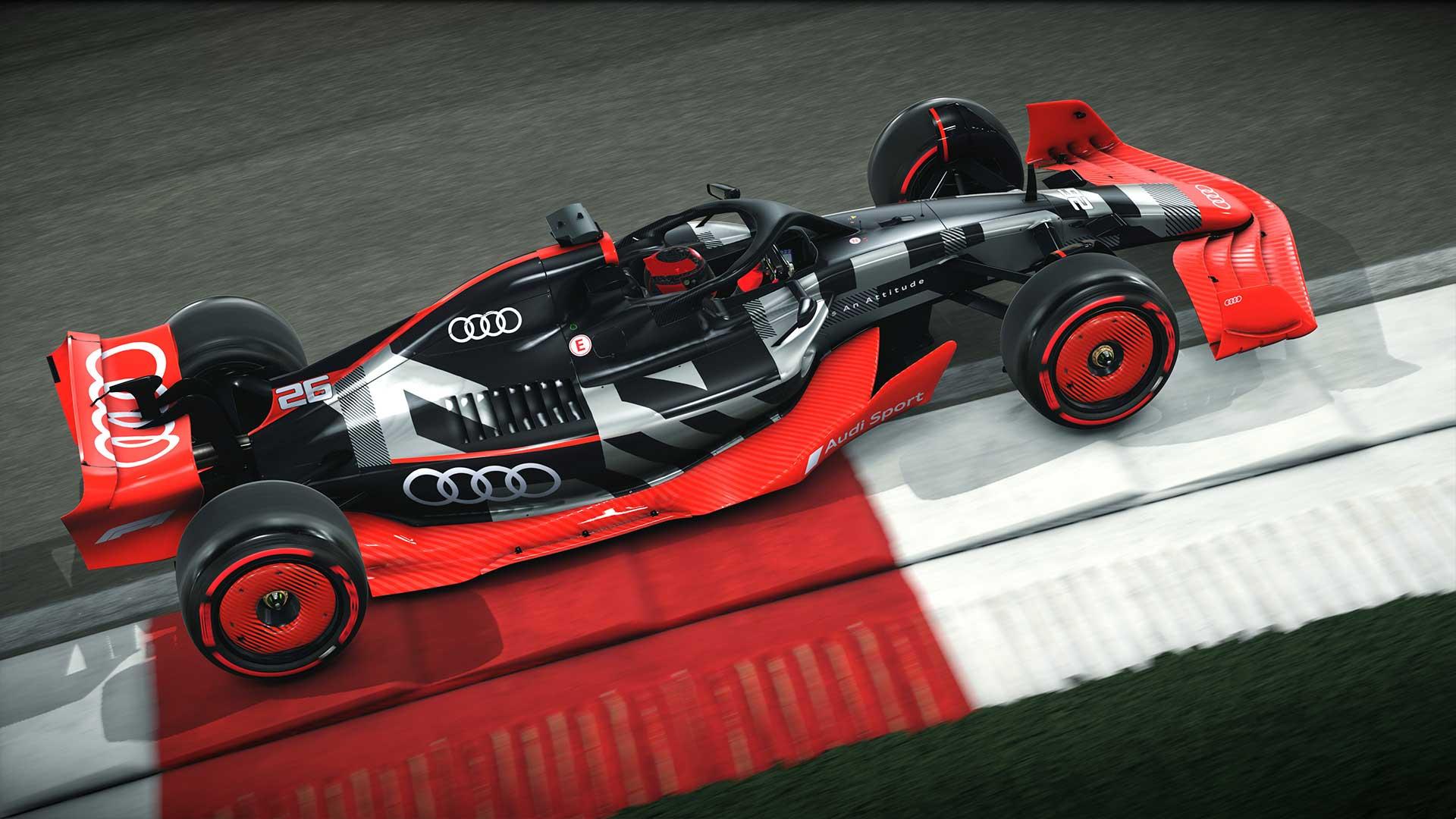HS got to know the forests of Santahamina, which are the oldest in Helsinki. In addition to the untouched natural islands, Santahamina is an example of a place where man has been able to significantly increase biodiversity through his own activities.
Three a concrete staircase covered with moss leads to an opening on the island of Santahamina in Helsinki, lined with more than a hundred-year-old lime trees.
As late as the 1960s, stairs led the Russians to build an artillery officer club, but fire has already taken it.
The trees surrounding the club are preserved. The autere light of September scatters between the trunks, and the air smells of dew, which in the morning the gradually increasing heat to the net evaporates from the surfaces of the corrugated leaves growing along the adjacent dirt road.
If it were spring now, this could be put in the middle of the white anemone sea for a long time.
“There there is a ringed grove owl, and a beak sparrow once nested in this tree, ”says our guide Jarmo Nieminen and points up at the foliage.
Nieminen is a lieutenant colonel evp. and the former director of the Department of Military History at the National Defense University, who has also been influential in the municipal coalition of the Coalition Party and the Greens.
“It’s the kind of theater and jaw-dropping. Everything has been agreed in advance, ”he commented on the sessions of the Helsinki City Council.
Nieminen knows the military islands of Helsinki, ie Santahamina, Vallisaari, Kuninkaansaari and Isosaari, like the pockets of his padded vest and organizes excursions for them as an entrepreneur. In addition, he has authored books with expert groups on the nature of Santahamina.
Jarmo Nieminen is a former director of the Department of Military History at the National Defense University, who has also influenced Helsinki’s municipal policy. In the background Santahamina pines.
In the active Santahamina, which is in military use, has very limited access, but here we are, exploring one of Helsinki’s most diverse nature paradises.
The island, which is just under 400 hectares in size, has the oldest forests in the city, for example. In an area of more than 200 hectares, the forests are on average 130 years old.
In addition, there are 1,200 different butterfly species on the island, 150 of which are endangered. Santahamina is also one of the most important bat areas in Finland, with more than 100 nesting bird species. There are about 200 endangered plant and animal species.
The number of natural groves and ravens on the island is remarkably large.
Fallen trees in a 150-year-old spruce tree in Santahamina.
Natural diversity is intertwined with current municipal policy.
In April this year, Helsinki’s politicians approved the Biodiversity Protection Program (Lumo) for 2021–2028, and diversity is also mentioned on many occasions in Helsinki’s recent urban strategy.
Diversity refers to the spectrum of species and communities on Earth. The sixth wave of extinction as a result of human activity has already led to the final extinction of several species.
Santahamina, for example, is a paradise for biodiversity because there are numerous different habitats in a relatively small area and they have their own plants, birds, mammals and insects.
In the pine forests of the island, different fungi grow than in the old spruce forest of the eastern part, and the same birds do not roar in alder ears and lime trees.
The goal of the Lumo program is that Helsinki strives to take into account the protection of biodiversity in all the city’s activities. Extensive, important green areas are to be preserved and the ecological connections between them are to be developed.
According to the program, the biggest challenges for biodiversity are urban growth and climate change. As green spaces are inevitably reduced due to construction, the quality of the remaining areas is of great importance for diversity.
Santahamina is rich in frogs. Jarmo Nieminen says that they thrive in clean forests. The picture shows the fine protective color of the frog.
Käkkäräinen and the shallow old pine is like a seven-meter bonsai tree. Next to it is a sign that reads “Erik’s Pine”.
Erik Hautamäki was born in Santahamina in 1921. His family had to move out of the island before the Winter War, but Hautamäki loved the island for the rest of his life.
Hautamäki, who died in the 21st century, did a lot of work to ensure that the island has remained in its current use. He was also the honorary president of the Santahamina Society.
Jarmo Nieminen looks at Erik’s title tree and the other pine growing next to it, which has gone through its trunks. They are at least 200 years old.
He says wood climbers have been nesting in wood threads for 20 years.
“The body of really old pines behaves that way. But these are not exactly visible when the forests have been cut down everywhere. ”
Nieminen says the Defense Forces is a “major nature conservation unit”.
Also Metsähallitus’ conservation biologist Antti Below notes in the book Santahamina – the natural treasures of the military islandthat the areas used by the Defense Forces have remained in even better condition in terms of nature conservation than many protected areas.
“The military island has the finest nature in Helsinki,” says Nieminen.
“Admittedly, Santahamina will be Helsinki’s last almost natural island now, when, for example, Vallisaari, which is open to the public, wears under the feet of visitors.”
Nieminen wonders that the number of visitors to Vallisaari is in no way limited in order to protect sensitive nature.
“It would be by no means unusual. That is what is being done in many countries. ”
There are forests in Santahamina that no one ever visits. The shooting range areas are a permanent no-go area.
In these forests, for example, many birds nest, and deer roam in them with their calves.
“The sound of guns doesn’t bother animals as long as it’s the usual soundscape for them, like here. The occasional berry wandering on the scene is a lot more of a concern, and they don’t visit the shooting range areas. ”
An army boat cools between Santahamina and the King Island opposite. The earth embankment connects Kuninkaansaari to Vallisaari.
The roads and different areas of Santahamina have special names.
Travel continues to Likolammi in Santahamina. Military island road signs seen along the route, such as the Kuperkeikanpolku, make a smile on your face.
Likolampi is a former sewage basin south of the barracks area, which is now the actual Eden of birds and frogs. In the 1970s, the area was stripped of land from a couple of acres to the sand to a state-of-the-art biological wastewater treatment plant.
When Santahamina was connected to the Helsinki sewer system a decade later, the pond began to clear.
Today, according to Nieminen, it is one of the most valuable bird nesting sites in Uusimaa in proportion to its area.
“The pond freezes to the bottom in winter, which means there are no fish in it at all. In their absence, frogs and insects can reproduce tremendously, which birds love. ”
The endangered black-cucumber terns washed only in Santahamina’s Likolammi throughout Helsinki.
Likolampi is a good example of the fact that the human handprint does not always destroy biodiversity – on the contrary.
The environment is enriched by the variety of open, semi-open and wooded areas. The new Lumo program highlights that there are 25 old manor parks in Helsinki, the nature of which is very diverse.
Meadows valuable for diversity are located in Helsinki, mainly on the lands of old mansions, villas and farms, where man has contributed to their creation.
Even old and dead hardwoods found in ordinary parks can serve as habitats for rare fungal and insect species.
On the other hand, forests are more diverse the less man has been involved in modern forestry – in other words, the forest, and especially the decaying trees, have been left alone.
This is what, for example, is based on Vartiosaari, which has been consecrated as a recreational island in Helsinki’s recent strategy the value of forests.
Decaying wood is an important habitat for many dwarf species, for example.
Contrary to what might be expected in the case of the capital, there is a lot of great forest in Helsinki.
This is because after the First World War, it was decided to treat the forests still in the city as recreational rather than commercial forests. For a long time, therefore, they have been able to be quite at peace with forest management, which is typical of commercial forests and seeks to improve forest yields.
To the blue dressed in a camping outfit Pekka Nikander stands with binoculars on the embankment of Santahamina and stares at the sky.
He is a member of the Uusimaa Bird Enthusiasts Association in Tringa. Its members have access to some areas of Santahamina, where they follow the autumn migration of birds, for example.
No miracle has reportedly been seen today.
“But the guy saw 4,000 fins in the morning,” he says.
Nikander looks a little jealous when he hears that we can get around the island with the photographer and Nieminen.
We still can’t get anywhere. A spokesman wearing the Defense Forces terrain green vest will accompany us throughout the trip. For example, he makes sure that pictures taken of beach areas do not reveal too much.
Pekka Nikander is watching birds on the beach of Santahamina.
Hours wear.
Nieminen takes us to Leipurinniemi to eat sea buckthorn directly from the bush and leads us to a 150-year-old spruce, where the fresh scent of resin catches your fingers as you adventure in the middle of fallen trunks.
He tells us where the cloaks, nightingales, golden breasts and eastern oven birds hold their concerts in the spring so that the noise goes straight to the ears.
The tour ends at the edge of a fenced-in shooting area where heather flowers bloom in a purple spot.
Nieminen smiles at the point where the bare rock surface makes a small drop.
“Those rides will be dancing in the spring. It looks great. ”
A Russian soldier engraved his name on the rock of Leipurinniemi in the late 19th century.
Jarmo Nieminen at the Santahamina waterfront. There he has seen otters, for example.
.






